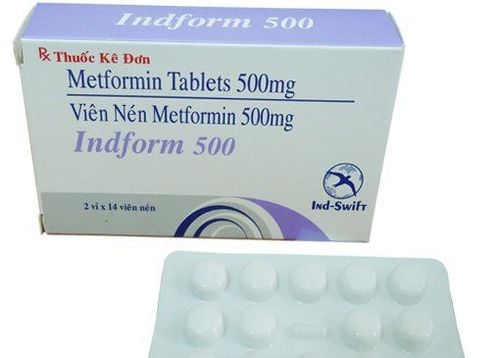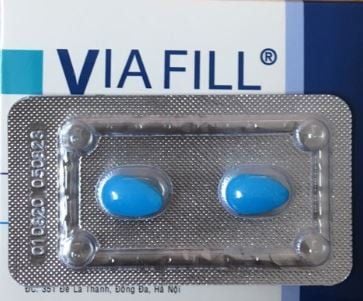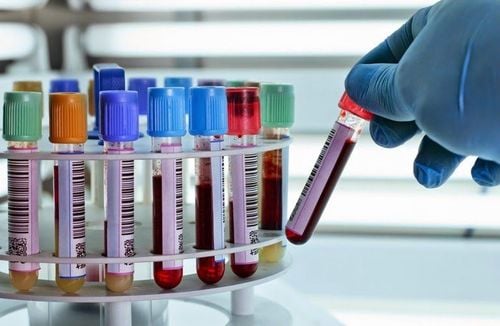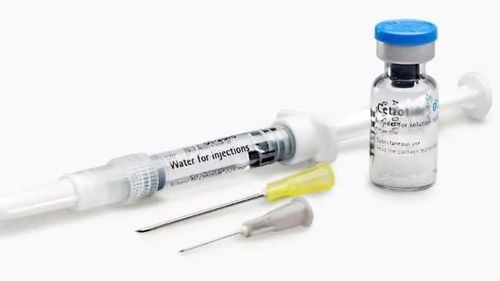This is an automatically translated article.
GnRH hormone is an important hormone of the body, used in the treatment of neurological diseases. The hormone GnRH stimulates the anterior pituitary gland to secrete LH and FSH, which are essential hormones for the reproductive system.1. About GnRH . hormone
GnRH hormone (gonadotropin-releasing hormone) is an important hormone for the nervous system, secreted by the hypothalamus, involved in the function of many organs such as the cerebral cortex, the hypothalamus and the brain. thalamus, thalamus, spinal cord, retina. GnRH hormone is considered an effective treatment for many different diseases of the nervous system.The mechanism of action of GnRH provides many benefits to patients with brain injury and spinal cord injury. GnRH has stimulant, protective, and nerve signal enhancing effects. The treatment's effect on the patient's behavior and cognition also improved positively. Thus, in the case of neurological conditions, it is likely that doctors will use a combination of treatment modalities, which may include GnRH agonists.
Trắc nghiệm: Tìm hiểu về “bí mật” của các Hormone
Hormone hầu như quyết định tới toàn bộ các chức năng quan trọng của cơ thể. Nó “làm việc” miệt mài để phát tín hiệu và điều hòa sự hoạt động của các cơ quan trong cơ thể, mô cũng như tế bào nhất định. Để hiểu hơn về vai trò cũng như cách thức các hormone tác động lên cơ thể, bạn có thể làm bài trắc nghiệm sau đây.
Nguồn tham khảo: webmd.com
2. Effects of GnRH hormone on the central nervous system (CNS)
There is growing evidence that the hormone GnRH has many important mechanisms of action on the central nervous system. These effects are being applied in new therapies to prevent and treat diseases related to the degenerative process and the impact of trauma on the central nervous system:2.1. Cerebral cortex There is a proportion of neurons in the cerebral cortex that are not affected by the hormone GnRH nor its receptor (GnRH - R). This suggests that GnRH may act as a neuroregulatory peptide. This mechanism has been demonstrated by analytical assays on cortical neurons of mouse embryos, adult mice, and also cultured neurons from mouse embryos. In the experiments were performed on neurons. cultured neurons from the cerebral cortex of rats, it was found that the hormone GnRH induces an increase in the expression of the trait of two cytoskeletal proteins, co-stimulators of 68 and 200 kDa, as well as an increase number and length of neurons.
2.2. Hypothalamus Using electrophysiology, it has been observed that neuronal stimulation in the preoptic area is influenced by the hormones LH and GnRH (collectively, LHRH). This result is also consistent with findings on the presence of GnRH receptors in neurons in the preoptic area and the nucleus accumbens. As such, it was concluded that GnRH may self-regulate its own release through an ultrashort-circuit upregulation mechanism. This autoregulatory mechanism of GnRH may be involved in the generation and regulation of the release of impulses.
2.3. Cerebellum
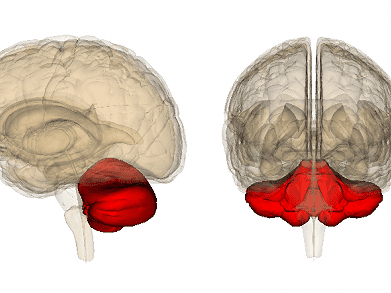
2.4. The hippocampus Some studies have shown that the CA1-CA3 regions of the hippocampus contain very high concentrations of GnRH-R. Furthermore, it has been shown that activation of GnRH-R in the hippocampus may be involved in changes in sexual behavior in mammals. In addition, intranasal injection of GnRH hormone was capable of causing increased numbers of c-fos-positive cells (an early gene) in the CA1 and CA3 regions. The induction of c-fos biosynthesis following GnRH action is transient and may reach a maximum after 1 to 2 hours, before falling to normal levels 8 hours later. These results suggest that GnRH has specific effects on protein synthesis in some neurons of the hippocampus, and that these effects are more or less related to c-fos.
On the other hand, activation of the GnRH receptor resulted in an increase in intrinsic neurosensitivity in CA1 and CA3 pyramidal neurons to the rat hippocampus over a fairly long period of time. Furthermore, GnRH receptor activation enhances synaptic transmission, mediated by ionotropic glutamate receptors in CA1 pyramidal neurons. This process is related to the stimulation of protein kinase C. Similarly, it has also been found that GnRH can stimulate sex neurosteroid synthesis in the hippocampus. The regulation of this neurosteroid synthesis is dependent on the increased number of synapses (in vitro). An increase in the number of synapses also occurred after infusion of GnRH into the hippocampus.
In summary, GnRH has a stimulating effect on the hippocampus and leads to more or less alterations in reproductive function, emotion and memory.
2.5. Spinal cord One study demonstrated that the spinal cord of adult sheep is potentially affected by GnRH and GnRH-R, as well as their mRNAs (which are copies of a piece of DNA that carries genetic information). Similarly, this phenomenon was also observed in the spinal cord neurons of mouse embryos and adult mice.
Several other studies have also been done in mice and animals to probe the effects of GnRH on the spinal cord. The results showed that GnRH has a stimulating effect on neurodevelopment, in addition to increasing neurostimulants and spinophilin expression in the study subjects. Besides, the use of GnRH hormone also increases the number and activity of nerve fibers in the spinal cord. Similarly, the expression of spinophilin in the spinal cord was also slightly increased compared with the control subjects. In addition to the neurological effects, it has also been found that GnRH can significantly increase the length and stride velocity of the individuals studied.
In another study, rats with spinal cord injury were treated with a GnRH agonist, leuprolide acetate (LA). The results showed that the mice participating in the study gradually recovered movement, improved kinetic gait and restored bladder reflexes. Furthermore, similar results were observed in mice with autoimmune encephalitis. Accordingly, treatment with LA has the effect of reducing clinical symptoms of the disease, increasing the expression of nerve stimulants and axons in the spinal cord. All of these findings may lead to the conclusion that the hormone GnRH or its analogue (LA), acts as a neuromodulator and is considered a potential factor for neurogenesis in the spinal cord injury.
3. What does early puberty have to do with GnRH hormone?

Precocious puberty is puberty that occurs in girls under 8 years old and boys under 9 years old, but precocious puberty mostly occurs in girls.
Precocious puberty has two forms:
Central precocious puberty (or true precocious puberty): occurs more commonly. The cause is due to elevated levels of the hormone GnRH, stemming from the phenomenon of hypothalamic-pituitary-gonadal axis working too early or due to the appearance of a brain tumor. Peripheral precocious puberty (or pseudoprecocious puberty): less commonly, due to an increase in sex hormones, due to pathologies of the gonads (ovaries, testes) or adrenal glands. Depending on the cause of precocious puberty, your doctor will choose the appropriate treatment. The hormone GnRH is an active ingredient in the treatment of central precocious puberty. GnRH has the effect of inhibiting the secretion of pituitary hormone, thereby avoiding the cause that promotes early puberty in children. In the case of a child with precocious puberty due to a brain tumor, the doctor may prescribe surgery or radiation therapy.
At the Pediatric Clinic - Vinmec International General Hospital, children will receive intensive examination on Pediatric endocrinology, kidney and endocrine related diseases. During the examination, parents will be completely consulted and answered questions about early puberty in children. Here, children will have sex hormone blood tests, bone age assessment tests, brain MRI scans or more specialized tests to determine the right cause of puberty early and promptly. treatment time.
Please dial HOTLINE for more information or register for an appointment HERE. Download MyVinmec app to make appointments faster and to manage your bookings easily.
Article referenced source: ncbi.nlm.gov



